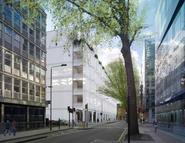**3pm Subhaneil Lahiri **3pm
Thursday 9th May 2019
Time:3.00pm
Ground Floor Seminar Room
25 Howland Street, London, W1T 4JG
Learning and memory with complex synaptic plasticity
Computational neuroscientists often describe synapses by a single number: the synaptic weight. Learning is then implemented by shifting this number. In contrast, biological synapses are complex systems with their own internal dynamics. This structure has profound consequences for their ability to learn and store memories. We analyse the entirety of a broad class of models of synaptic plasticity. We find trade-offs between rapid learning and slow forgetting and the models that navigate them optimally. This yields predictions for the different synaptic structures found in different brain regions. We also investigate genetic/pharmacological manipulations intended to speed up learning. We uncover the rules by which such interventions succeed or fail. The outcome is determined by both neural activity and synaptic structure. This provides an explanation for the mixed results of experiments with enhanced plasticity.
Bio:
Subhaneil studies the relation between the structure of biological processes and their performance in their functions, particularly models of the processes that implement synaptic plasticity. Rather than focusing on specific models, his preferred approach is to analyse a broad space of models. In this way, one can find trade-offs between different aspects of performance and the properties of models that enable the management of these trade-offs. In this way we can understand how these structures can be adapted for different purposes in the brain as well as in artificial neural networks. Subhaneil currently a post-doc studying theoretical neuroscience and biophysics in the Ganguli Lab at Stanford University. Before that, he got his PhD in physics at the High Energy Theory Group, Harvard University, and then spent two years studying behavioural neuroscience as a post-doc in the Samuel Lab, also at Harvard.
 Close
Close



_RGB.jpg)